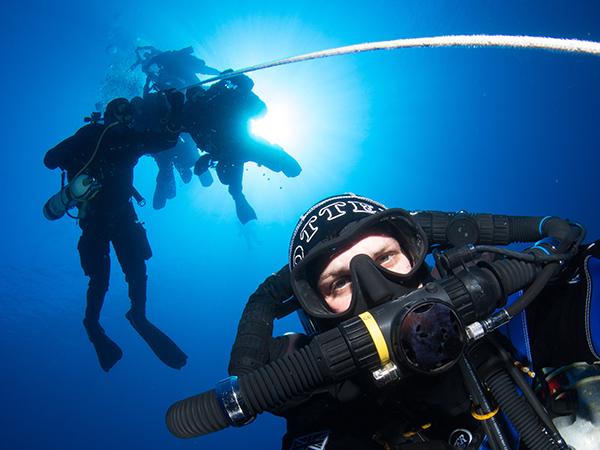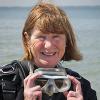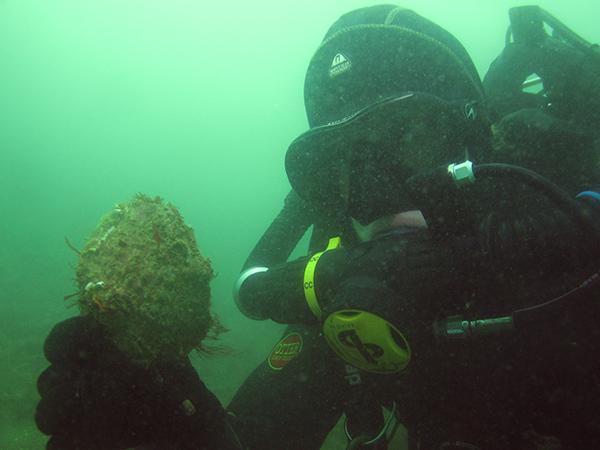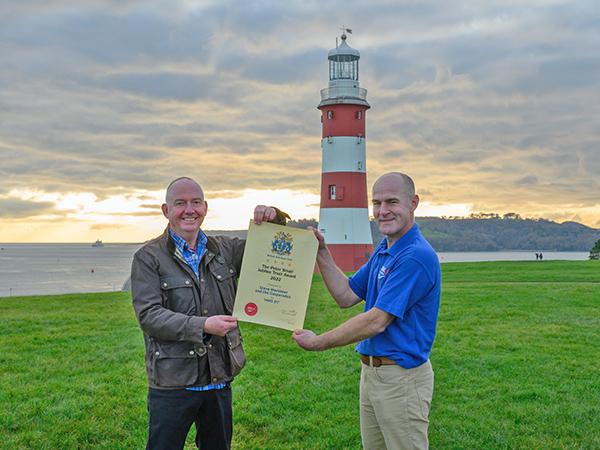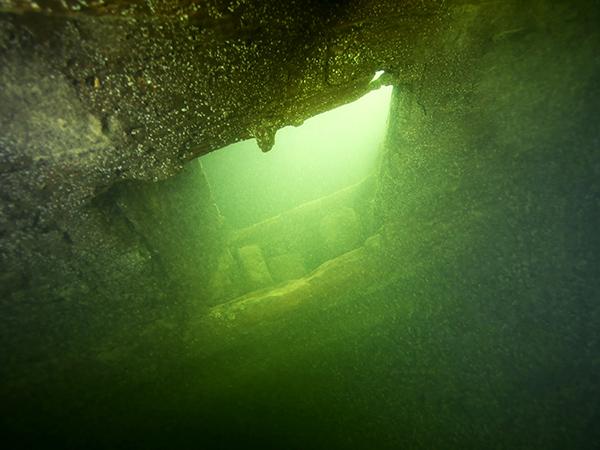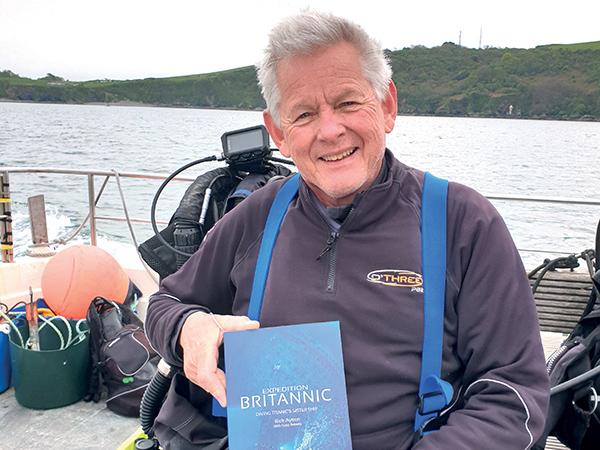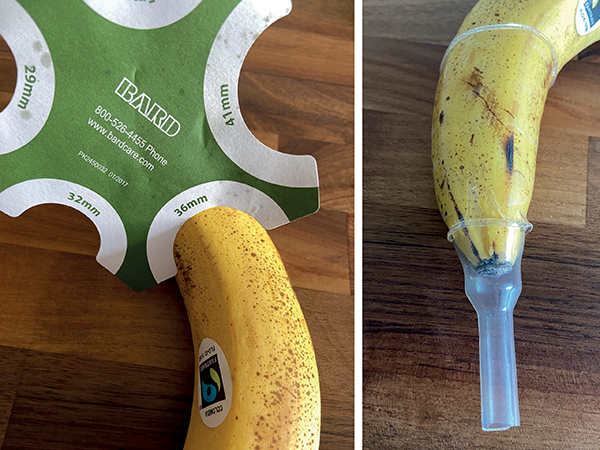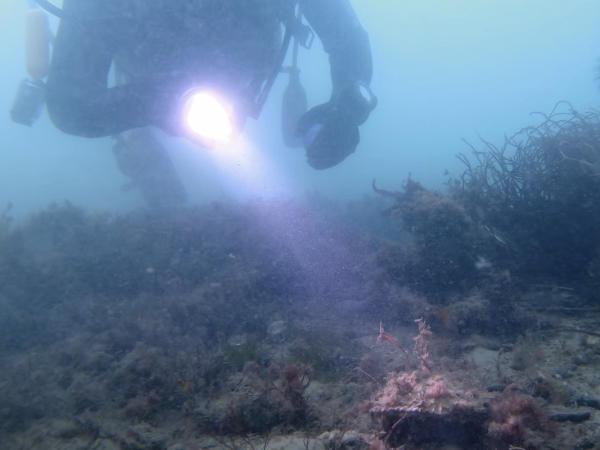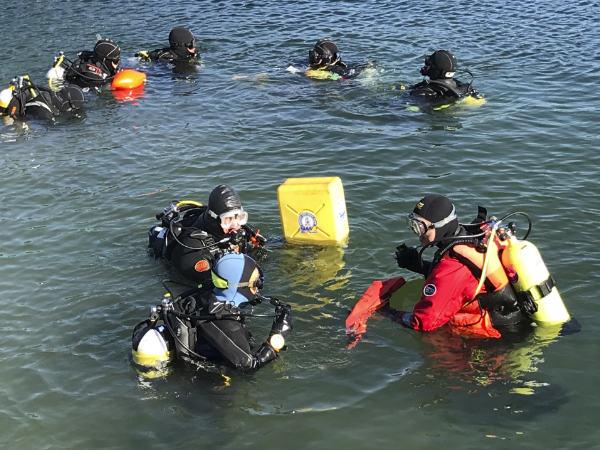About the project
BSAC has launched a special project to commemorate the 100th anniversary of the scuttling of the interned German High Seas fleet at Scapa Flow at the end of World War.
The actual anniversary is 21st June 2019 but the project aims to bring together divers throughout 2019 in order to support the wider Scapa 100 project.
The key aims of this BSAC project are:
- To encourage groups of BSAC divers to visit Scapa Flow in 2019 (not just for the week of the 21st June but throughout 2019) and dive the wrecks and scrap yard sites from both local hard boats and also from club RIBs.
- To contribute to the wider Scapa 100 project and feed data gathered by divers to local stakeholders and provide material for an online virtual library. The wreck of the Coln will be the BSAC’s sponsored wreck.
- To support the local community by:
- Visiting and raising the profile of the underwater heritage at Scapa Flow
- Raising funds for local charities
The project builds on previous BSAC Expeditions based off MV Halton and with support from Sula Diving that ran in November 2016, (see article on Chance – get link from SCUBA Magazine) in November 2017 (see SCUBA, September 2018 article) and in-conjunction with MV Halton during the European Scientific Diving Conference 2018.
When is the expedition taking place?
The plan is to have divers contributing to the project through 2019, so spread the effort over a number of weeks rather than everyone descending all at once on the 21st June 2019. The exact timing of your expedition can be arranged to suit your own plans.
How can my club participate?
There are four ways divers from your club can participate:
- Bring your own club boat to Scapa and dive there as part of a multi-club expedition.
- Branches may also have spare places on their boat for individual divers from other branches.
- Apply for hard boat spaces booked by BSAC (limited space available so please register your interest as soon as possible).
- Book a hard boat. Whilst most boats are fully booked the week of the 21st July, other hard boat dates still have availability (correct as of August 2018).
Full guidance to assist with all the above options will be made available to clubs and divers expressing an interest via the online form.
Why should we participate?
This is a fantastic opportunity to be part of the wider Scapa 100 project, especially if you have had Scapa Flow on your “to dive” list for a while but never quite made it there.
If your club doesn’t do much project diving, taking part in BSAC’s Scapa 100 Project is a great way of picking up the skills needed to dive new and adventurous sites in one of the world’s most famous wreck diving destinations.
What is the top tip for diving Orkney in 2019?
Orkney is a busy place in the summer so it is unlikely that clubs can just turn up and find accommodation/ferry tickets/permits etc. To avoid disappointment and to allow the local infrastructure to anticipate, accommodate and facilitate you and your dive team, plan and book well in advance!
In particular confirm key logistics are available for when you want to go i.e. spaces on the ferry, accommodation on Orkney and a dive permit if you are talking your club RIB. If you are choosing to dive the flow in the more traditional way get the boat booked and sort out the ferry. Obviously choosing a liveaboard over one of the day boats comes with the accommodation and dive permit built in to the deal.
How do we get there?
Most people take the ferry. It’s all pretty straightforward, although there are a few forms to fill in. You can bring all of your other usual kit too, including cylinders.
Northlinks Ferries operate a service between Scrabster and Stromness. They also operate a service between Aberdeen and Kirkwall.
Pentland Ferries operate a daily service between Gills Bay and St Margarets Hope.
If you travel light and hire weights and cylinders, there are direct flights to Kirkwall from all the major Scottish airports and Manchester.
Stomness is the main base for diving Scapa Flow and is about 30-minute drive from Kirkwall.
What is the diving like?
Scapa is regarded as one the world’s best wreck diving destinations. Much has been written about the main wrecks; three large battleships SMS Markgraf, SMS Kronprinz Wilhelm and SMS Konig and four smaller light cruisers SMS Coln (BSAC’s sponsored wreck), SMS Karlsruhe, SMS Dresden and SMS Brummer.
Many wrecks also have guns. In fact, Scapa is the perhaps the most accessible place to dive and see guns that were fired in the Battle of Jutland. The wrecks are also a haven for marine life which can be prolific on these wrecks, even those in the flow.
Scapa was a Royal Navy base for many years and for good reason. It is a huge natural harbour which means diving is unlikely to be curtailed by poor weather. Visibility inside the flow is typically 5-10m but can be substantially more, depending on the time of year.
Whilst the wrecks are old and are collapsing, they considerably more intact than wrecks of a similar vintage in the open sea.
Much of the German Fleet was salvaged between the wars but not without leaving traces on the seabed. The Bayern Turrets are a popular scrapyard dive. However, over the last couple of years BSAC has undertaken some pilot expeditions which have provided 'citizen science' input to help identify new scrapyard sites (many of which were until that time, undived by Sports Divers).
As well as the main wrecks there are also many other wreck sites to explore. The blockships of Burray Sound, World War II wrecks of the German destroyer F2 and the barge salvaging it. More on Scapa Flow wrecks
Are the wrecks protected?
Wrecks Protected Status: In recognition of their historical and cultural importance, the wrecks of the Cöln, Dresden, Brummer, Karlsruhe, Kronprinz Wilhelm, König and Markgraf have been protected as scheduled monuments. Divers are welcome to enjoy and respect these wrecks but removal of artefacts from them is illegal.
The wrecks of the Royal Oak and the Vanguard are off limits to diving. The only thing you should take away from the wrecks are memories and photographs.
Do you need a dive permit to dive inside Scapa Flow?
Updated 1st May 2019
Diving in Scapa Flow Harbour area requires a permit from Orkney Harbour Authority using this application form which should be returned to OHA, not to BSAC. If you are diving with a local hardboat operator this is taken care of by the operator. Diving without a permit is prohibited. Orkney Harbours operate a comprehensive Vessel Traffic Service (VTS) to monitor all vessels operating in Scapa Flow.
How do I obtain a permit?
Orkney Harbours will consider issuing Dive Permits only to bona fide clubs and members who will dive inside the flow respectfully (i.e. not removing artefacts) and operate their vessels responsibly and in accordance with local bylaws and Vessel Traffic Service (VTS) requirements. Details are in the appendix on the permit application form.
BSAC attended a meeting chaired by the Harbour Master attended by Orkney Harbour officials, hard boat skippers, Historic Environment Scotland and Orkney Marinas to discuss management of diving activities, particularly during the week of the centenary. Consequently, the Dive Permit application and conditions have been updated accordingly to help ensure diving is managed safely and in line with changes to legislation.
A key requirement is an option for the Harbour Authority to implement a time slot system for accessing the main sites to ensure sites do not become overly crowded. Most clubs we are aware of will have booked hard boats. There are a few clubs taking their own boats. At present we are not expecting the need to implement this system based on the known number of club RHIBS attending.
Download and complete the dive permit application form and return it by email to harbours@orkney.gov.uk.
How experienced do we have to be?
The diving is suitable for Sports Divers who are comfortable and experienced in diving in UK-style tidal conditions and visibility. Your RIB drivers should be BSAC Diver Cox’ns or equivalent with a VHF radio licence and your Dive Manager should be an Advanced Diver or above.
But don’t worry if you are not there yet – you have a year to get ready and your BSAC Regional Team will help you if you need additional training to prepare.
How else can you help?
BSAC will try and pair up clubs that are experienced in expeditionary diving with ones that do not tend to take their boat to new locations to share knowledge and expertise.
BSAC will also try and offer a mentor for clubs that would like assistance with this kind of expeditionary/project diving. The aim is to create a lasting legacy for the expedition in terms of improving the capacity of participating clubs to do adventurous diving in new locations.
What if we don’t have a boat?
There are numerous hardboats in Scapa Flow.
Details of those contributing to the Scapa 100 project.
Clubs taking their own RIB (RHIB) may also have spaces. BSAC has reserved spaces on MV Halton for the weeks of 7th and 14th July 2019 Register your interest now.
What about accommodation?
The islands are not only popular with divers but are a holiday destination in their own right so accommodation is at a premium. There is a range of hotels, bed and breakfast and self-catering accommodation available although it is likely to get booked up quite early.
Is air/nitrox available?
Yes. Most liveaboard hardboats have blending panels and compressors. Gas fills are also available from Scapa Scuba Dive Centre in Stromness.
What if I need dive kit repaired?
Scapa Scuba Dive Centre and Leviathan International could help. Both are often kept busy with drysuit repairs from visiting divers. Scapa Scuba is based in the old lifeboat building in Stromness a five-minute walk from the quayside and is more of a dive centre whereas Leviathan is on the quayside and is a much more diverse business.
Where do I launch my RIB (RHIB)?
There is a slipway in Stromness that is always open and it is envisaged most divers will choose to launch from there. Please be efficient in loading and launching and courteous to other users of the quayside. However, you can also launch at slipways at Scapa (just south of Kirkwall) and Houton.
Scapa has the disadvantage that it is a small and very busy pier and so is not as practical; it also has nowhere to park trailers and cars. However, Houton is a good alternative with plenty of parking space.
Are there any special rules for taking a RIB?
Aside from ensuring you book your RIB on the ferry, one of the key considerations is fuel. If like a car your RIB has sealed inboard fuel tanks, these are generally acceptable on most crossings. However, portable fuel tanks, jerry cans etc. are generally considered as 'dangerous goods' and above certain small quantities (typically 1lt petrol and 5lt diesel) you must follow appropriate rules which include only being allowed to travel on certain freight ferries with the appropriate dangerous goods note paperwork.
Where do I moor my RIB and how much does it cost?
You can moor at Stromness Marina
Contact by email: info@orkneymarinas.co.uk
Contact by phone: 01856 871313 please leave a message if no one is available.
Prices are as published on the Stromness Marina website. These will be reviewed at the end of the year for 2019.
Stromness Harbour is a busy working harbour and there will be no room to tie up RIBs. It is strongly advised to use the marina facilities for security. The alternative is to haul RIBs out overnight and try and find suitable parking, for example, Trailer Parking out on Cairston Road. It is a good idea to book ahead as the marina is busy during the summer months.
Where can I park my car?
This is available on a first come basis on Ferry Road, Stromness. Be considerate when parking around the marina and harbour area.
Where can I park the RIB trailer?
There is a large area of hard standing specifically for trailers etc about one mile from the marina on Cairston road, Stromness.
What about refuelling the RIB
Diesel is available on the marina. Petrol can be purchased at the local garage 750m along the road from the marina. A spill kit is on the marina is available should an accidental spillage occur.
Where can I get my RIB fixed?
If you have engine or other mechanical issues Hamnavoe Engineering in Stromness may be able to help. They can be contacted on 01856 850576.
For chandlery try the Rope Centre, opposite Stromness Marina.
What is there for non-divers to do or if I can’t dive?
There is plenty to do:
Discover the other Scapa 100 related projects.
The museum at Lyness, the old navy base is being refurbished for 2019 and is fascinating place to visit with artifacts from the Scapa wrecks and also a propeller from HMS Hampshire.
The bell of HMS Royal Oak (sank at Scapa in WWII) can be seen at Kirkwall Cathedral.
The Orkneys are on the cruise liner route and local companies take visitors to many of the islands' prehistoric attractions such as Skara Brae, Maes Hoe and Ring of Brodgar.
Visit the Orkneys website for more details.
All sounds great! Where do I sign up?
Click to register your interest in Scapa 100 Project.
Still have a question?
Please email the team at scapa100@bsac.com

